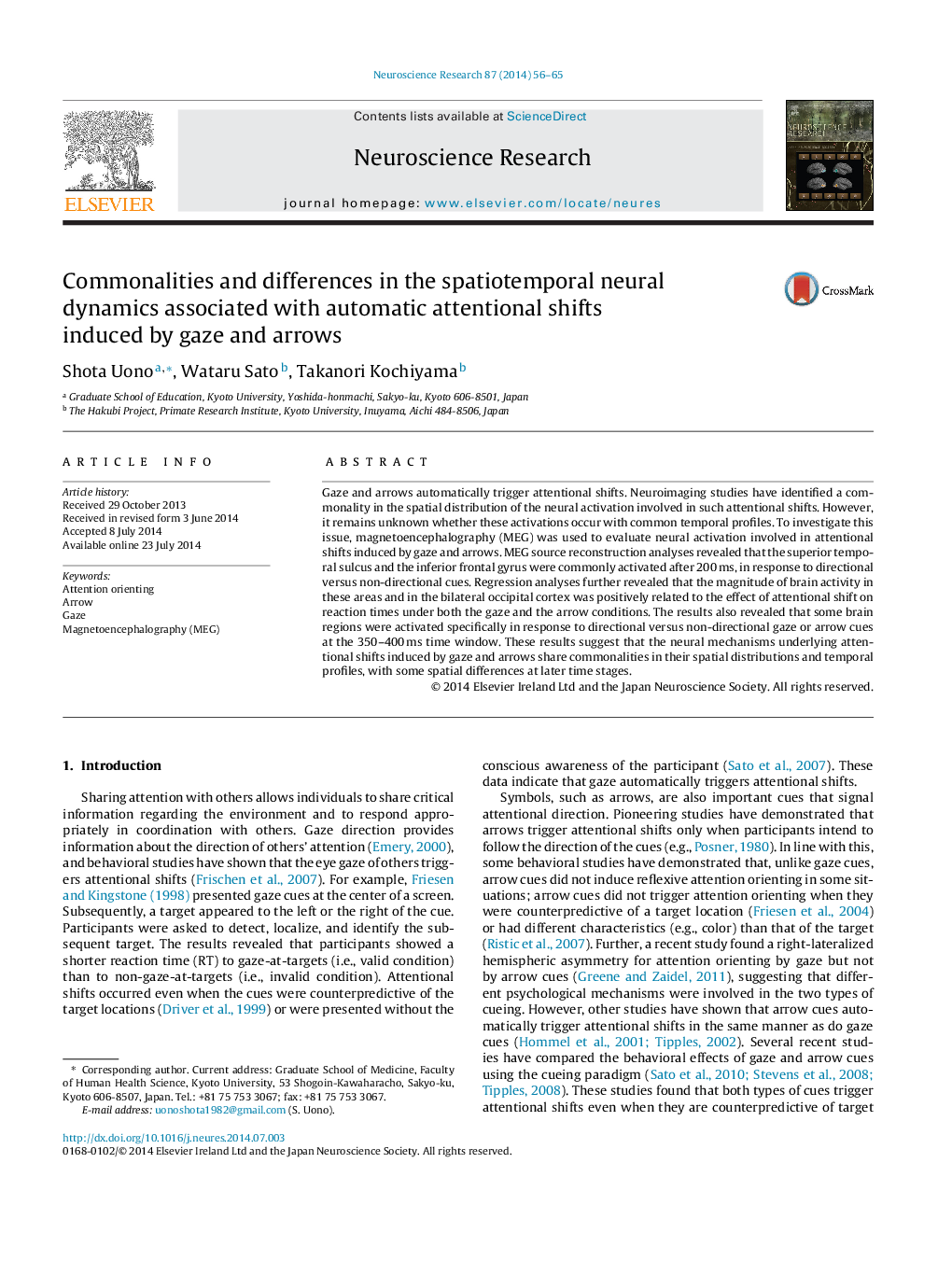| Article ID | Journal | Published Year | Pages | File Type |
|---|---|---|---|---|
| 6286187 | Neuroscience Research | 2014 | 10 Pages |
Abstract
Gaze and arrows automatically trigger attentional shifts. Neuroimaging studies have identified a commonality in the spatial distribution of the neural activation involved in such attentional shifts. However, it remains unknown whether these activations occur with common temporal profiles. To investigate this issue, magnetoencephalography (MEG) was used to evaluate neural activation involved in attentional shifts induced by gaze and arrows. MEG source reconstruction analyses revealed that the superior temporal sulcus and the inferior frontal gyrus were commonly activated after 200Â ms, in response to directional versus non-directional cues. Regression analyses further revealed that the magnitude of brain activity in these areas and in the bilateral occipital cortex was positively related to the effect of attentional shift on reaction times under both the gaze and the arrow conditions. The results also revealed that some brain regions were activated specifically in response to directional versus non-directional gaze or arrow cues at the 350-400Â ms time window. These results suggest that the neural mechanisms underlying attentional shifts induced by gaze and arrows share commonalities in their spatial distributions and temporal profiles, with some spatial differences at later time stages.
Related Topics
Life Sciences
Neuroscience
Neuroscience (General)
Authors
Shota Uono, Wataru Sato, Takanori Kochiyama,
